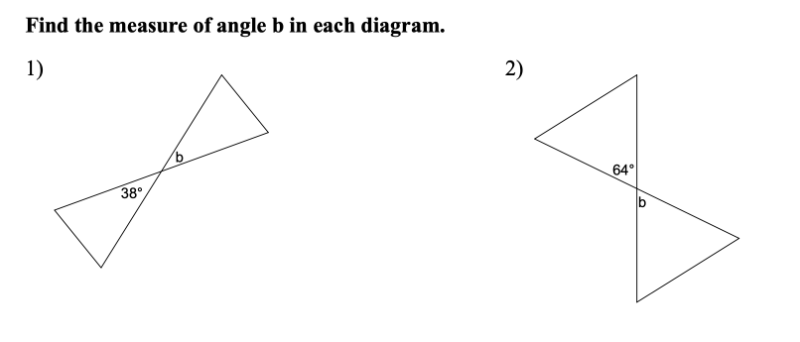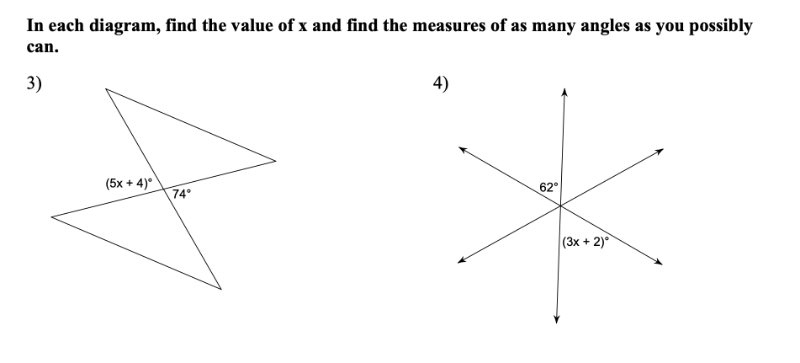
Vertical Angles Exploration (1)
Interact with this app for a few minutes. Be sure to drag the LARGE POINT around and be sure to move the 2 sliders you see.
Notice anything interesting? Describe as best as you can.
What happens if you make the size of the [b][color=#ff00ff]angle[/color][/b] BIGGER or smaller? [br][br][b][color=#ff00ff](You can change the size of the manila angle by using the manila-colored slider). [/color][/b]Does your response to the question above change? Why? Why not? Describe.


Special Pair of Lines in the Coordinate Plane
In the applet below, feel free to move [b]ANY LARGE POINT[/b] anywhere you'd like [b]AT ANY TIME. [/b][br][br]Interact with this app for a few minutes. Be sure to tamper with all sliders and be sure to move the LARGE POINTS around. After doing so, please reflect on these dynamics by answering the few questions that follow.
1.
Press the reset button. Slide the long black slider slowly (once again) and stop it at the exact moment the [b][color=#ff00ff]2nd pink angle[/color][/b] reaches the 2nd line. [br][br]What does the action of the [b][color=#ff00ff]pink angles[/color][/b] imply about both black lines? [br]How/why do you know this to be true?
2.
Now resume sliding the slider where you left off in question (2) above. [br][br][b]What does the motion of the 2nd right triangle imply about both black lines? [/b]
3.
What causes the right triangle (that appears) to [b][color=#0000ff]turn blue[/color][/b]? What causes it to [b][color=#ff0000]turn red[/color][/b]? Please describe as best as you can.
4.
Write a conditional (a statement of the form "If _____, then _____") that describes the phenomena through which you've just dynamically interacted.
5.
If we formed the converse ("flip") of the conditional ("If _____, then _____") statement you wrote for (4), would that statement always be true? That is, if you swap both hypothesis and conclusion of the statement you wrote for (4), would this statement be true? Why? Why not? Explain.
Half-Life Action (3)!!!
[b]Recall the half-life of a substance is defined to be the amount of time it takes for half of ANY AMOUNT of that substance to decay. [br][br][/b]This applet illustrates that [color=#1e84cc][b]the half-life of an substance[/b][/color] is INDEPENDENT OF (i.e. DOES NOT DEPEND UPON) [color=#980000][b]the INITIAL AMOUNT of SUBSTANCE[/b][/color]. Thus, [color=#e06666][b]at any point in time[/b][/color], the [color=#1e84cc][b]half-life of a substance always remains invariant. [/b][/color][br][br]To illustrate this, [color=#e06666][b]move the pink point anywhere you'd like[/b][/color] and then slide the black slider. [br][br]
Quick Demo: 1:05 sec to END. (BGM: Simeon Smith)
Derivative Function: Without Words
In the applet below, a function [i]f [/i]is shown (black). [br]Its derivative function, f', is shown in gray. [br][br]Feel free to input any function you'd like. [br][br]Slide the slider to see the physical meaning of the derivative of a function (at a certain input value: x-coordinate of white point) within this graphical context. [br][br][i]How can we sketch the graph of the derivative of a function? Explain. [/i]
